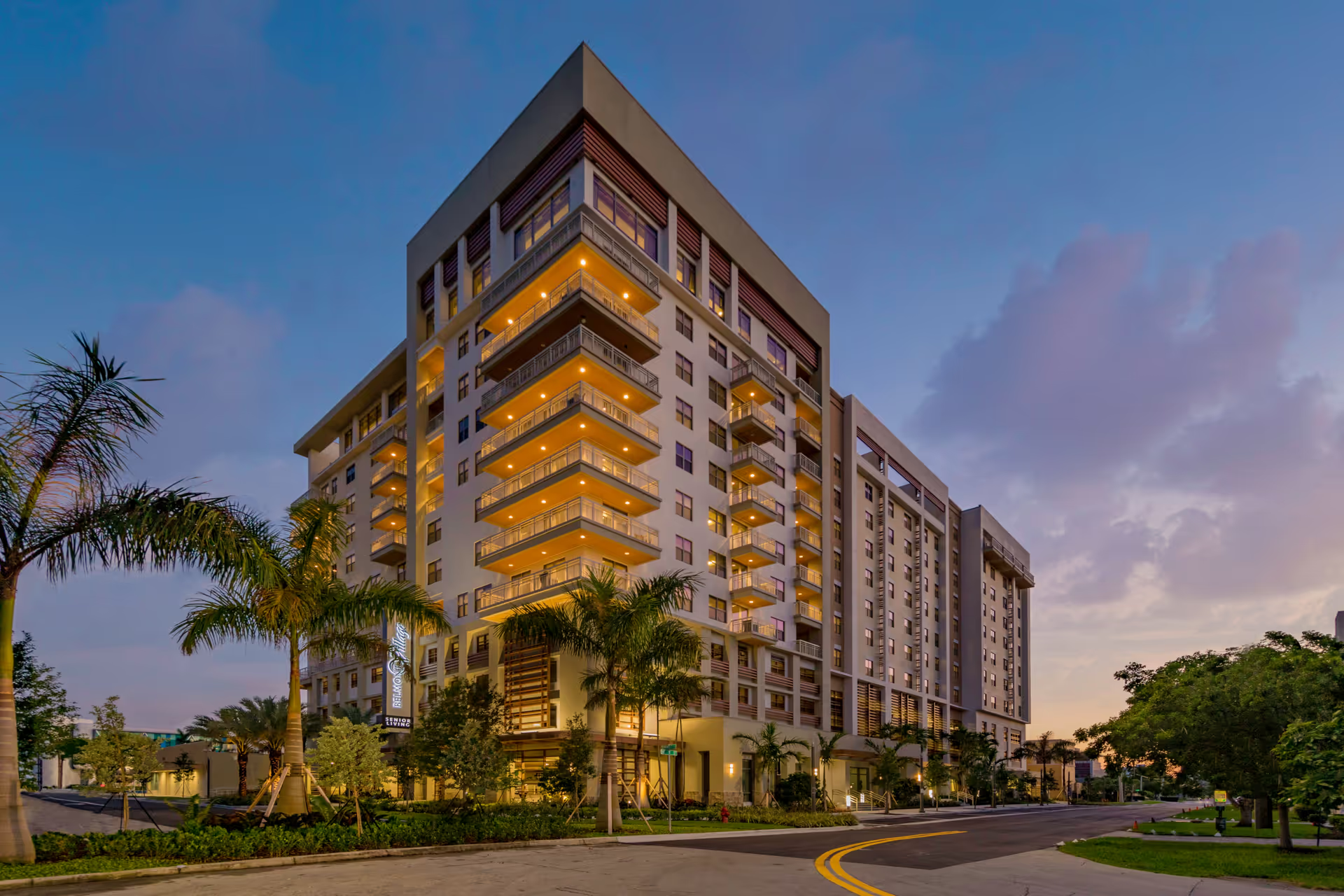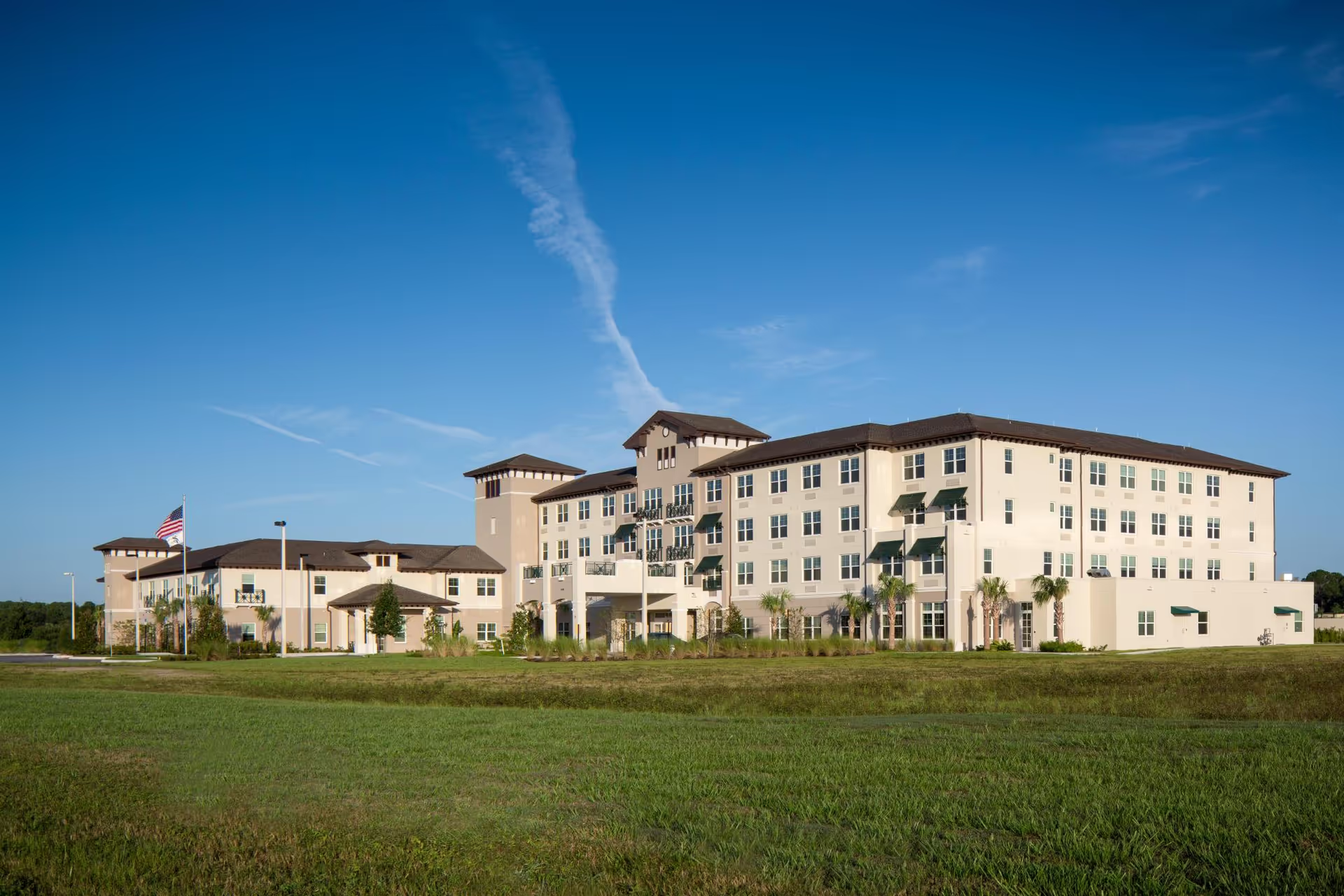Overall sentiment across the reviews for Pelican Landing Assisted Living & Memory Care is predominantly positive, with a strong and consistent emphasis on the quality and compassion of frontline staff and the attractiveness of the facility. Many reviewers repeatedly praise individual staff and leadership by name (for example James, Linda, Nikki, Lynn, Christine, Dana, Thelma, Diana), describing them as caring, proactive and hands-on. Multiple families report smooth admissions, active assistance with move-in logistics (furniture, TV, photos), and quick responsiveness to questions and needs. For many residents, placement at Pelican Landing is associated with improved mood, increased social engagement and an overall better quality of life.
Facility upkeep, cleanliness and ambience receive frequent positive notes. Reviewers describe an immaculate campus with a welcoming lobby, private rooms, secure memory care units, courtyard and garden areas, and pleasant outdoor seating. The community is characterized as intimate and family-oriented; many reviewers comment that the environment feels home-like rather than institutional. On-site services such as primary care, therapy, dermatology and podiatry, plus transportation to appointments and frequent outings to restaurants and museums, are cited as important conveniences that families appreciate. Activity programming—ranging from brain-building games, craft rooms and weekly entertainment to larger special events like holiday parties and monthly brunches—is repeatedly identified as a strength that helps residents stay engaged.
Dining is another commonly praised area: numerous reviews call the food "amazing," "delicious" and well organized, with multiple alternative meal selections and special dining events. At the same time, there are isolated complaints about late-night menu limitations and a specific comment describing a poor night menu (half sandwich and chips). Overall, dining is most often described positively, and the dining room and restaurant-style service are frequently noted as highlights.
Despite repeated praise, the reviews also reveal meaningful and recurring concerns. Staffing stability and consistent leadership are prominent issues: several reviews reference frequent turnover, administrative changes without timely replacements, and variability in memory care staffing. Some families report understaffing during evenings and nights, which ties into safety concerns—multiple reviewers mention resident falls, and a few describe instances where alarms or certain safety measures were not used or permitted. These safety reports vary in severity; some families emphasize quick and competent medical response following incidents, while at least one review makes very serious allegations of ongoing negligent care, failure to recognize a designated healthcare surrogate, denial of medical records, neglect of basic daily needs, and ensuing legal action. That allegation is serious and stands apart from the more common operational complaints; it suggests that experiences across units and shifts may be uneven and that communication or policy enforcement can sometimes break down.
Communication and family access are mixed themes. Many reviewers praise responsive management and frequent, reassuring communication from staff and leadership. Others describe troubling communication failures: refusal to allow family contact with a resident, removal of a phone from a room, denial of health information to a designated surrogate, or poor front-desk phone etiquette. These complaints point to inconsistent practices or policies being applied in ways that families experienced as obstructive. Relatedly, some reviewers expressed concern about institutional policies such as prohibiting cameras in living areas—this policy was controversial for some families who felt it limited transparency and peace of mind. There are also commentary threads about staff behavior (staff on phones, public reprimands, ignored walkie pages) that indicate occasional lapses in on-floor professionalism and monitoring.
Other recurring negative themes include pricing and financial flexibility: several families voiced concerns about perceived high costs and asked for accommodations during hospital or rehab periods. A few reviewers felt leadership prioritized investor interests over resident care, a perception that can amplify distrust when operational problems arise. Design and signage for cognitive impairment are a mixed bag—some reviewers praised the modern memory care design and safe outdoor access, while others found signage/readability and layout less ideal for people with dementia.
In summary, Pelican Landing appears to be a well-run, attractive community with many strengths: dedicated and frequently lauded staff, strong activity programming, appealing dining, comprehensive on-site services, and a safe, home-like environment that has improved life for many residents. However, there are notable and repeated concerns about staff turnover, inconsistent staffing levels (especially nights), safety incidents including falls, communication breakdowns in some cases, and at least one very serious allegation of neglect and legal dispute. Prospective families should weigh the strong positive patterns—particularly the numerous commendations for named staff and the facility’s cleanliness and programming—against the reported variability in leadership continuity, staffing consistency, and certain policy choices. Asking specific questions during a tour about night staffing ratios, fall-prevention practices, alarm and camera policies, how surrogates and families receive medical updates, and contract/financial flexibility would help clarify whether Pelican Landing’s strengths align with an individual resident’s needs and risk profile.







